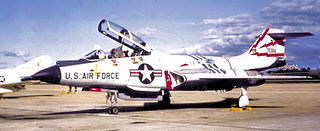
The 21st Air Division is an inactive United States Air Force organization. Its last assignment was with Tactical Air Command, being stationed at Griffiss Air Force Base, New York. It was inactivated on 23 September 1983.
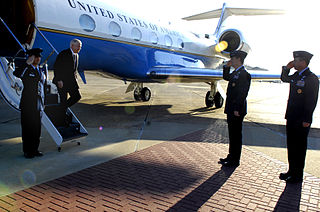
The 42nd Air Base Wing is a United States Air Force unit assigned to Air University of Air Education and Training Command. It is stationed at Maxwell-Gunter Air Force Base, Alabama and is the host unit for Maxwell-Gunter. The wing's primary mission is to support all activities of Air University, the 908th Airlift Wing and other tenant units stationed at Maxwell-Gunter.

The 526th Intercontinental Ballistic Missile Systems Group is an inactive United States Air Force (USAF) unit. It was last located at Hill AFB, Utah, where it was inactivated in 2010. The group was first activated during World War II to conduct anti-submarine warfare in the Caribbean and off the Atlantic seaboard of Georgia and Florida. It was again active during the Cold War as an Atlas missile wing. Its final period of active service was as a systems and sustainment organization for USAF missile systems.

The 487th Air Expeditionary Wing is a provisional United States Air Force unit assigned to the United States Air Forces in Europe. As a provisional unit, it may be activated or inactivated at any time. The unit's last known assignment was in 2003 at Cairo West Air Base, Egypt, during Operation Iraqi Freedom.

The 25th Attack Group is an active United States Air Force unit, stationed at Shaw Air Force Base, South Carolina. It was activated in February 2018 to operate unmanned aerial vehicles and is assigned to the 432d Wing, which is located at Creech Air Force Base, Nevada.

The 865th Technical Training Squadron is an inactive United States Air Force unit. Its last assignment was with the 1st Missile Division at Redstone Arsenal. Alabama, where it trained Italian Air Force personnel on the SM-78 Jupiter. It was inactivated on 1 November 1959.

The 35th Bombardment Squadron is an inactive United States Air Force unit. It was activated in January 1940 as the United States built up its armed forces prior to World War II. In the fall of 1941, it deployed to the Caribbean and, following the attack on Pearl Harbor engaged in antisubmarine patrols. Following the transfer of the land based antisubmarine mission to the Navy, and with the lessening of threats to the Panama Canal, the squadron returned to the United States, where it was disbanded in June 1944.

The 26th Tactical Missile Squadron is an inactive United States Air Force unit. It was activated in 1959 as the 26th Air Defense Missile Squadron to provide missile air defense for New England and was stationed at Otis Air Force Base, Massachusetts, where it was inactivated on 30 April 1972. It received its current name in 1985. when it was consolidated with the 26th Tactical Reconnaissance Squadron, a World War II unit that provided reconnaissance support for ground units in training until it was disbanded in 1943.
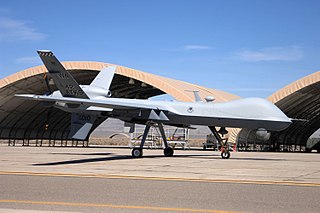
The 22nd Attack Squadron is a United States Air Force unit assigned to the 432d Wing Air Combat Command at Creech Air Force Base near Indian Springs, Nevada. It flies General Atomics MQ-9 Reaper Unmanned aerial vehicles.
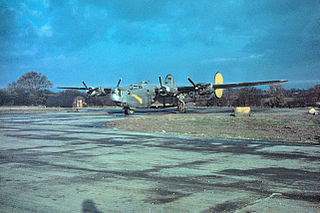
The 847th Bombardment Squadron is an inactive United States Army Air Forces unit. Its last assignment was with the 489th Bombardment Group at Great Bend Army Air Field, Kansas where it was inactivated on 28 March 1945. The squadron performed antisubmarine patrols in 1942 and 1943. After reforming as a heavy bomber squadron, it engaged in combat in the European Theater of Operations until returning to the United States in late 1944. The squadron was inactivated while its parent group was training as a very heavy bombardment unit.
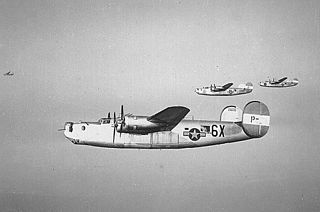
The 855th Bombardment Squadron is an inactive United States Air Force unit. The squadron was first activated at Lantana Airport, Florida, in October 1942, as the 522nd Bombardment Squadron. It was inactivated on 8 September 1945.

The 831st Bombardment Squadron was a squadron of the United States Army Air Forces. It was activated in 1942 as the 516th Bombardment Squadron and flew antisubmarine missions off the Atlantic coast as the 11th Antisubmarine Squadron. Later, it saw combat in the Mediterranean Theater of Operations as a Consolidated B-24 Liberator unit, where it earned a Distinguished Unit Citation. Following V-E Day, the squadron returned to the United States and was inactivated at Sioux City Army Air Base, Iowa on 20 August 1945.

The 863d Bombardment Squadron is a former United States Army Air Forces unit. It was first organized as the 518th Bombardment Squadron in October 1942, when it replaced a National Guard unit participating in antisubmarine patrols off the Atlantic coast, becoming the 13th Antisubmarine Squadron in November.. When the Navy took over the coastal antisubmarine mission in August 1943, the squadron moved to the western United States, where it formed the cadre for the 493d Bombardment Group and was redesignated as the 863d. It moved to England in the spring of 1944 and participated in the strategic bombing campaign against Germany until April 1945. It returned to the United States and was inactivated in August 1945.

The 851st Strategic Missile Squadron is an inactive United States Air Force unit. It was last assigned to the 456th Strategic Aerospace Wing, stationed at Beale Air Force Base, California. It was equipped with the HGM-25A Titan I intercontinental ballistic missile, with a mission of nuclear deterrence. It was the last Titan I squadron to achieve alert status on 1 February 1961. The squadron was inactivated as part of the phaseout of the Titan I on 25 March 1965.

The 395th Tactical Missile Squadron is a United States Air Force unit. It has not been active under that name.

The 839th Bombardment Squadron is an inactive United States Army Air Forces unit. It was activated in January 1941 as the 79th Bombardment Squadron and equipped with Douglas A-20 Havoc light bombers. Following the attack on Pearl Harbor the squadron began to fly antisubmarine patrols off the Atlantic coast and over the Caribbean Sea, becoming the 8th Antisubmarine Squadron.

The 37th Tactical Missile Squadron is an inactive United States Air Force unit. It was last active as the 37th Air Defense Missile Squadron, assigned to the 23d Air Division, stationed near Kincheloe Air Force Base, Michigan, where it was inactivated on 31 July 1972.

The 30th Tactical Missile Squadron is an inactive United States Air Force unit. In 1985 the squadron was formed by combining three United States Air Force and Army Air Forces units that had served in World War II and the Cold War into a single unit with a common heritage. However, the combined unit has not since been active.

The 24th Tactical Missile Squadron is an inactive United States Air Force unit. It was last active as the 74th Air Defense Missile Squadron assigned to the 23d Air Division of Aerospace Defense Command, stationed near Duluth Municipal Airport, Minnesota, where it was inactivated in 1972. The squadron's earliest predecessor was active early in World War II as an antisubmarine unit in the Caribbean and Europe until its mission was transferred to the United States Navy. During the Cold War it was a training unit for Matador cruise missiles. Its most recently active predecessor was an air defense missile squadron in the northern United States from 1960 to 1972.

The 361st Tactical Missile Squadron is an inactive United States Air Force unit. It was formed in 1985 by the consolidation of the 1st Antisubmarine Squadron and the 661st Bombardment Squadron. However, it was a "paper", technical, redesignation that never moved beyond a Pentagon filing cabinet, and no squadron was ever active under the title.
























